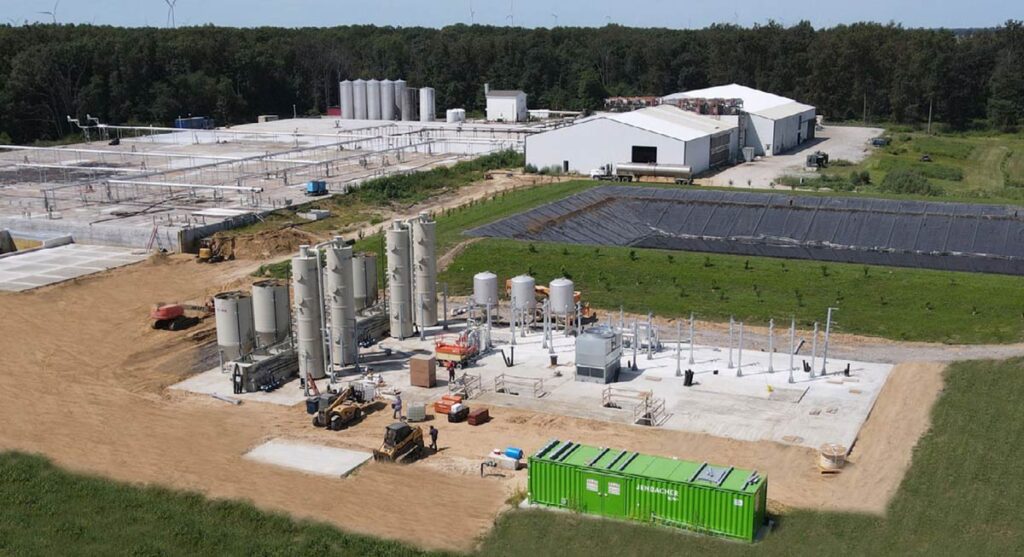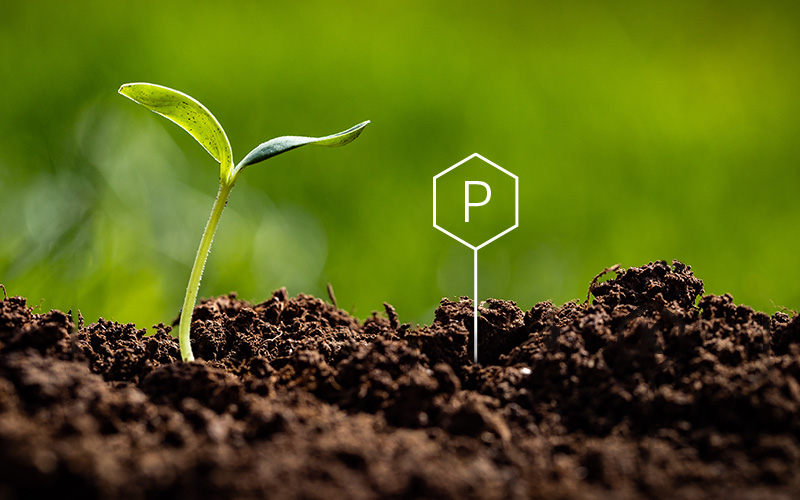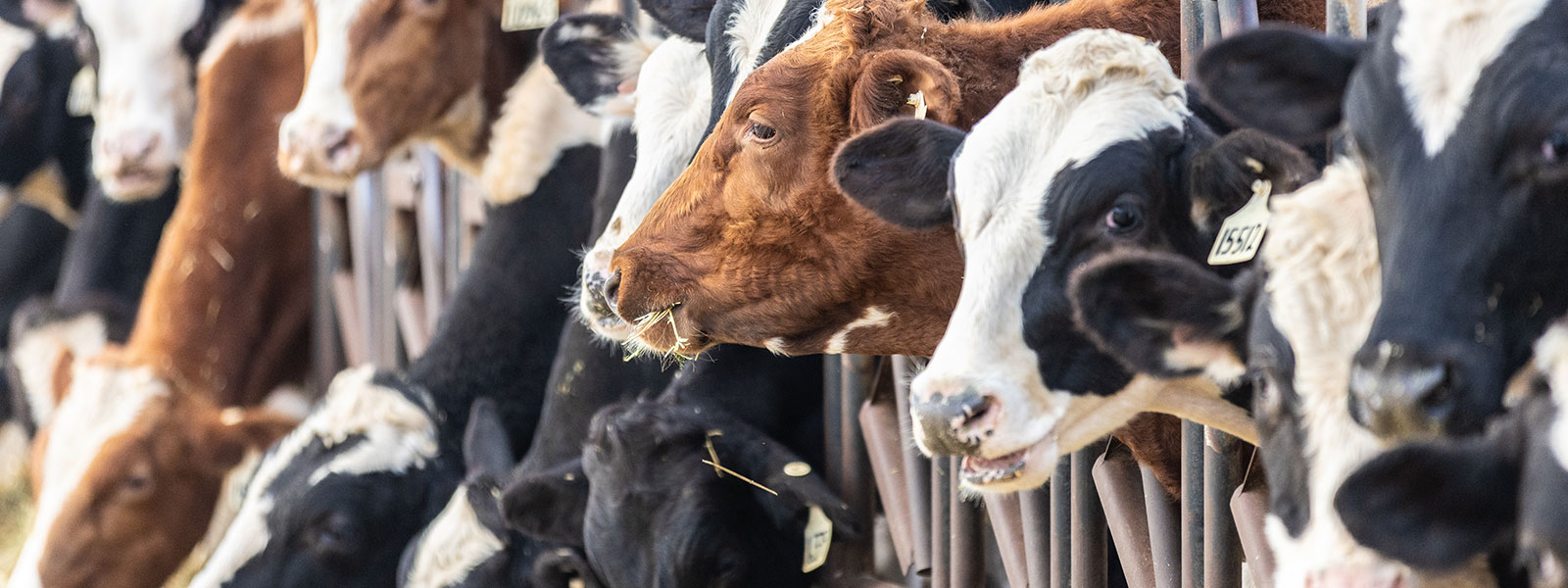
Turning animal waste into resources
A constant supply of waste is a certainty on any livestock or poultry operation. The modern DVO digester out-performs older designs such as the European “round-tank”/CSTR digesters as well as covered-lagoons, while providing a host of economic and environmental benefits for dairies, feedlots, swine and poultry facilities.
On dairy alone, DVO processes the manure from over 400,000 dairy cattle. It is the North American market leader for anaerobic digestion and environmental engineering, delivering proven solutions and services to agriculture for more than 30 years.
Our Roots are in Agriculture
 We live here
We live here
DVO’s roots are in rural America, and we’re surrounded by animal agriculture. We got our start on dairies and know how to best integrate with them. Today we also process manure from more North American cows than any other company.
 Staying power
Staying power
Over three decades, we’ve worked with more than 100 different operations involved in animal agriculture. As a result, we’ve built a wealth of knowledge that can be invaluable in creating a solution that delivers on your goals.
 A green future
A green future
DVO helps you reach sustainability and environmental stewardship goals in a dependable and profitable way. You’ll be a better neighbor, and your animals and crops will prosper from the digester and its byproducts.
 You're in the driver's seat
You're in the driver's seat
It’s a seller’s market for animal and bird waste. Investors are actively seeking new commercial operations for biogas projects. When you’re approached, demand a DVO solution to get the most value from the deal.
Producer Benefits
- Highest ROI – Increased biogas production per ton means more dollars for producers who share in biogas production.
- High-quality bedding – Doesn’t need to be composted like competing digesters.
- Irrigate to a growing crop – Liquid fertilizers can be irrigated without damaging crops.
- Easy to operate and maintain – Designed to be operated by the owner/farmer, are simple to maintain and, above all, are optimized for reliability.
- Carbon footprint – Improved digestion also means greatly reduced harmful greenhouse gas emissions.
- Digestion for poultry litter – DVO has resolved issues surrounding poultry litter digestion.
- Pathogen destruction – Harmful aerobic bacteria that cause farmers problems are destroyed in the DVO digester.
- Vector and weed seed control – Irrigated DVO digestate are free from these “fugitives.”
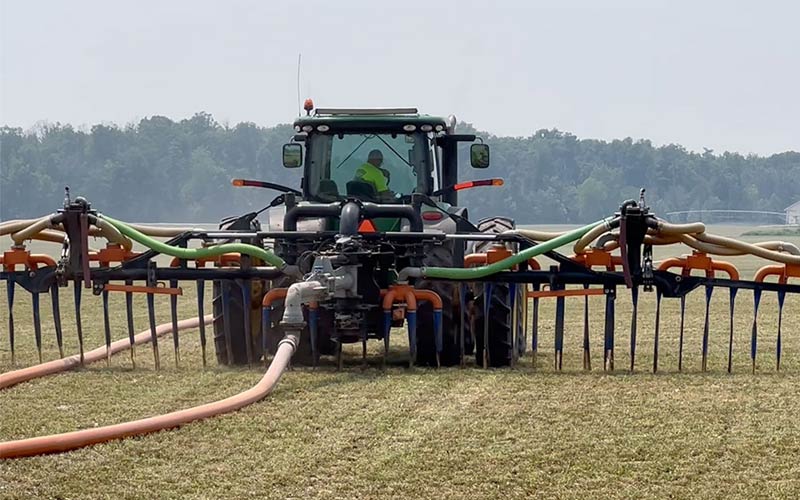
Irrigate and Fertilize with Confidence
The digester consumes sticky starches and performs the natural process of mineralization within the digester vessel instead of in the soil. Unlike raw manure, this treated liquid from the anaerobic digester is made “plant-ready.” It can be irrigated to a growing crop, making nutrient management more flexible. An optional secondary “fine-solids separation” step allows for the majority of a farm’s phosphorus to be placed into a cake form. It can then be transported to fields that need it while also allowing the liquid volume to be pumped through a pivot irrigation system.
Digester Type Performance Comparison
| Two-Stage Linear Vortex™ | Complete Mix | Covered Lagoon | |
|---|---|---|---|
More biogas means more D3-RIN revenues per cow | 115 | 80 | 50 |
Design generation | 3rd | 2nd | 1st |
Plant longevity (avg years) | 30+ | 15-30 | 5-10 |
Lowest cost per MMBtus output/time | Best | Poor | Poor |
Preferred by farmers | Best | Poor | Poor |
Can process 100% of dairy manure | Best | Okay | Poor |
Performance is not “seasonal” | Best | Best | Poor |
Ability to divert all VS from lagoon storage | Best | Poor | Poor |
Processes more dairy waste than any other | Best | Poor | Poor |
Flush, scrape and vac-collection dairies served | Best | Okay | Best |
Superior animal bedding quality | Best | Poor | Poor |
No composting of solids needed | Best | Poor | Poor |
Pathogen destruction (e-coli, salmonella, etc.) | Best | Okay | Poor |
Odor and weed-seed destruction | Best | Okay | Poor |
Methane emissions avoided per cow | Best | Okay | Poor |
Greenhouse Gas (GHG) impacts avoided | Best | Okay | Poor |
Renewable power generated per cow | Best | Okay | Poor |
Positive carbon footprint | Best | Okay | Poor |
Digester is certified “Newtrient Recognized” | Best | Poor | Poor |
Efficient, optional ammonia recovery step | Best | Poor | Poor |
Suitable for co-generation (e.g., food wastes) | Best | Okay | Poor |
| Download PDF |
The digester allows us to have another source of income. We also use this as a way to be better neighbors. The odor issues that the dairy used to experience have been minimized to the point of being negligible now. We're very proud of it. It makes us better neighbors and that's something that we set out to do for that reason.
– Don Niles, Dairy Dreams, WIRelated Projects
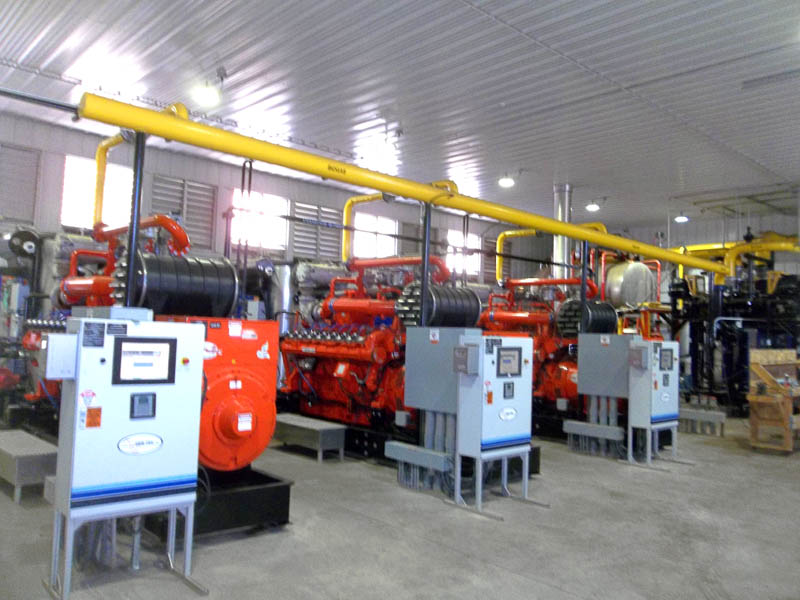
District 45 Dairy, MN
7,200 milking, 2.13 MW

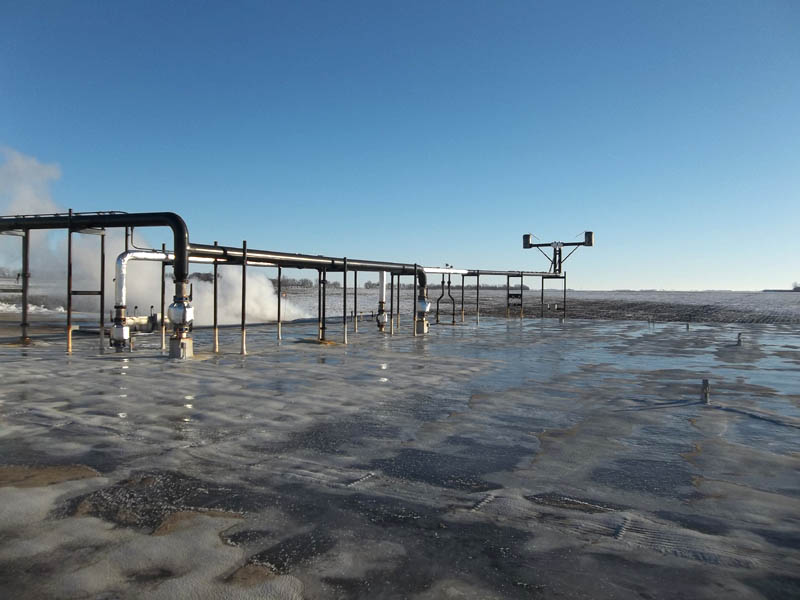

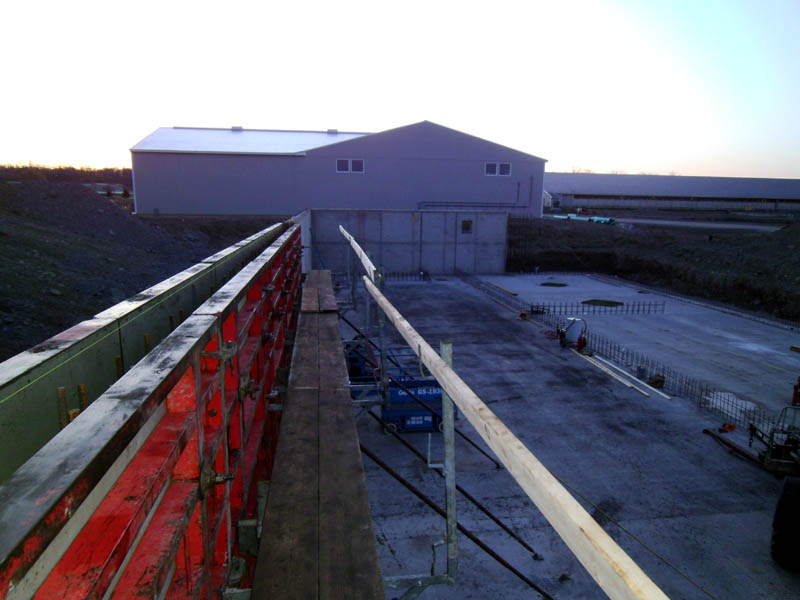
Willet Dairy, NY
3,500 milking, 1 MW
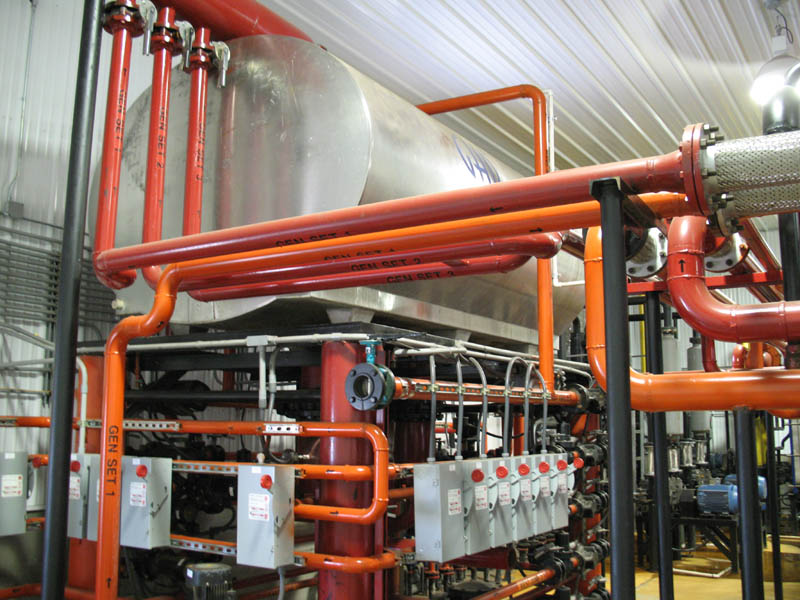
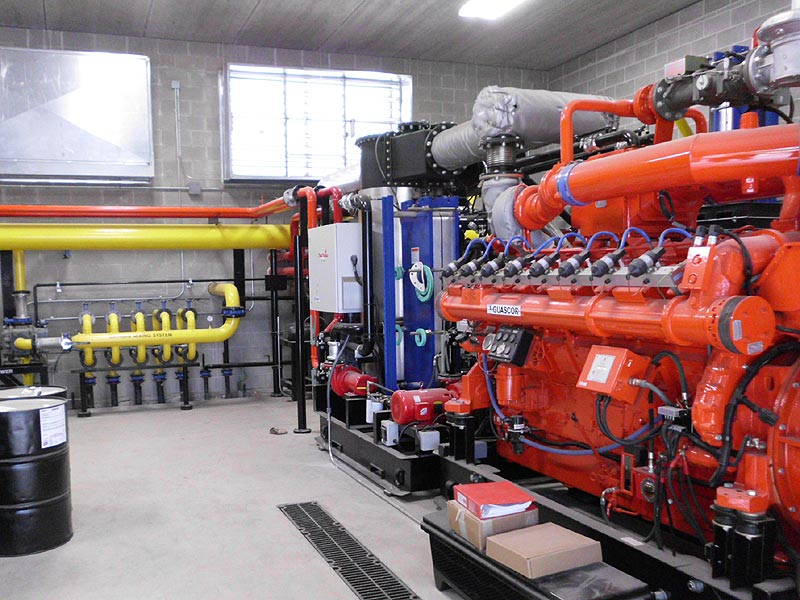
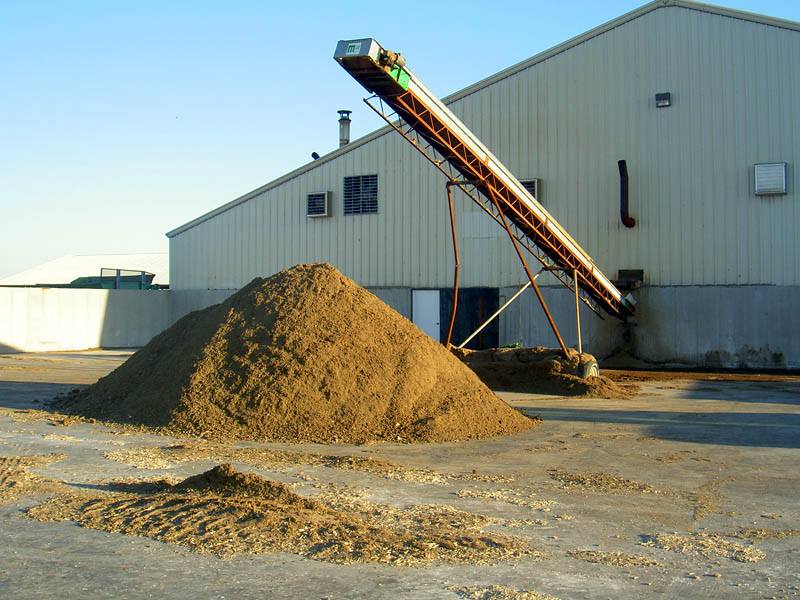
Holsum Irish Dairy, WI
3,300 milking, 900 kW

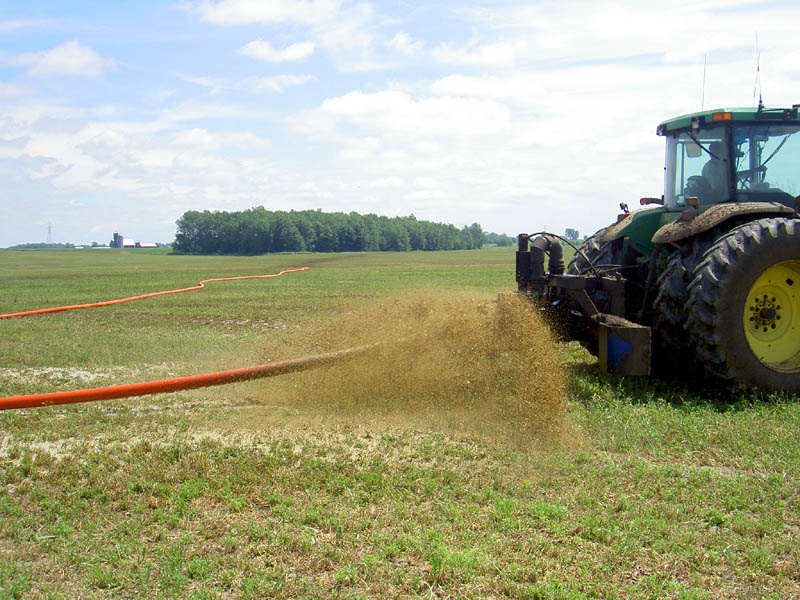
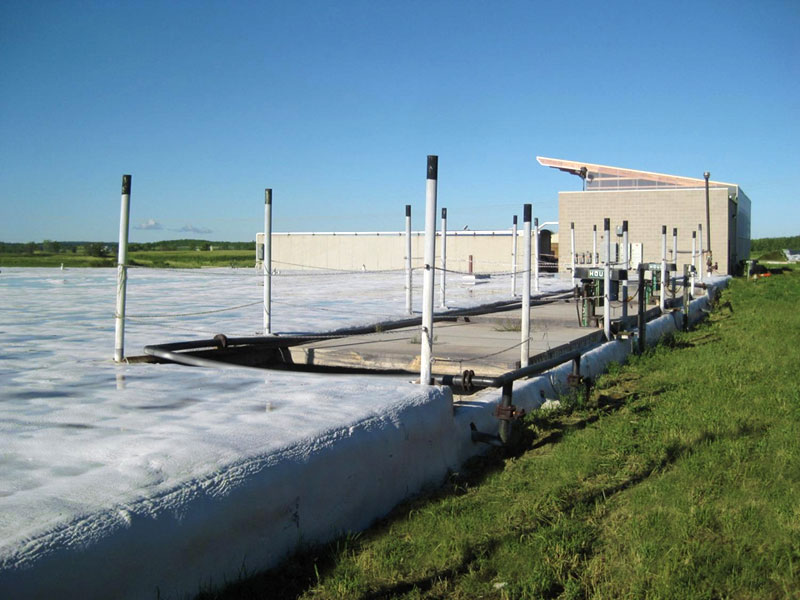
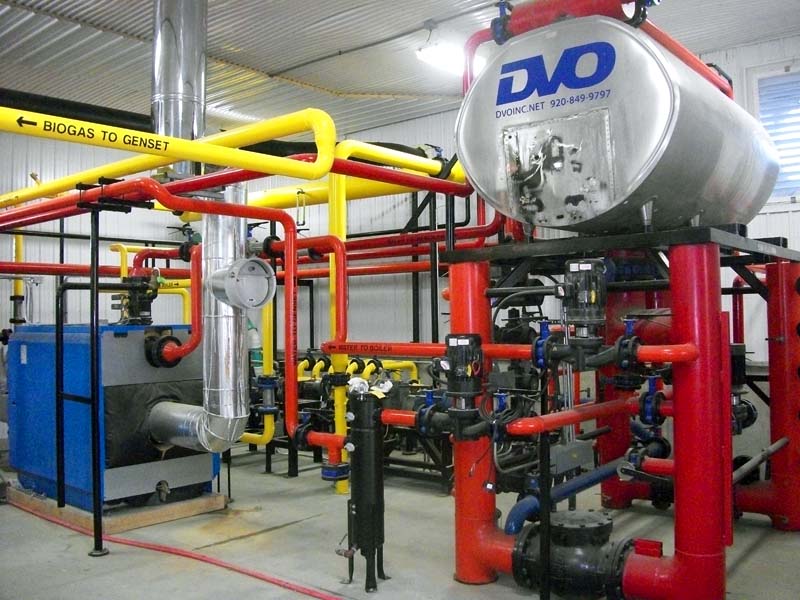
Four Hills Farm, VT
2,000 milking, 750 kW
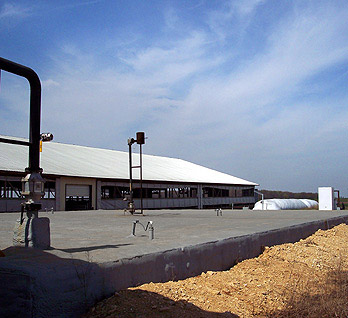
Scheidairy Farms, IL
650 milking

Green Mountain Dairy Farm, VT
Dairy + food wastes
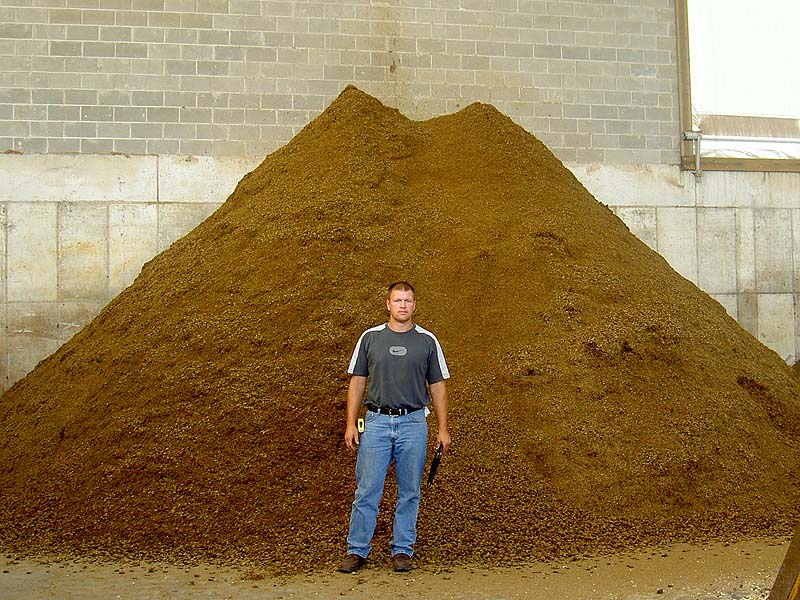
Willow Point Dairy, MI
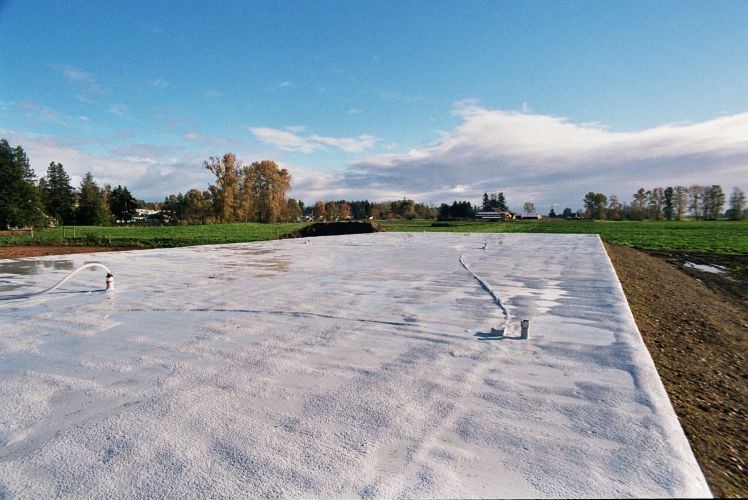
Van Der Haak Dairy, WA
Mixed wastes by Regenis Corp.

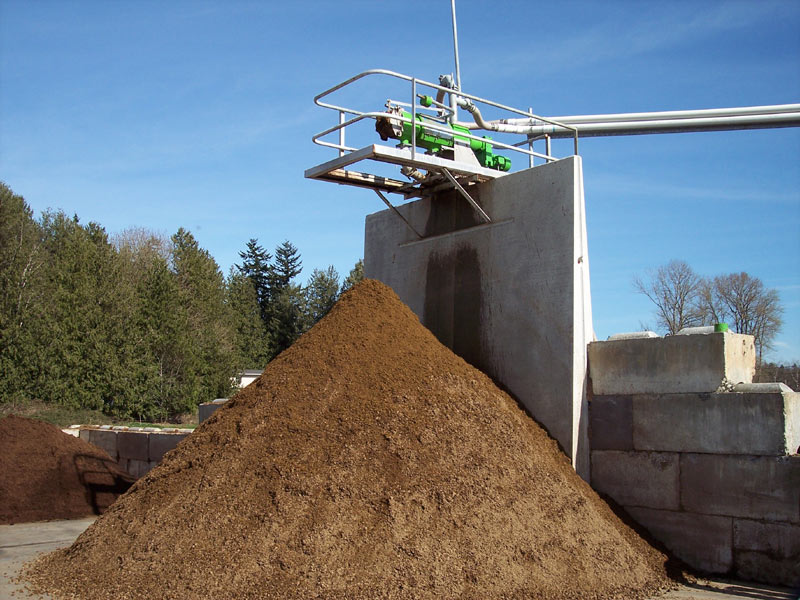

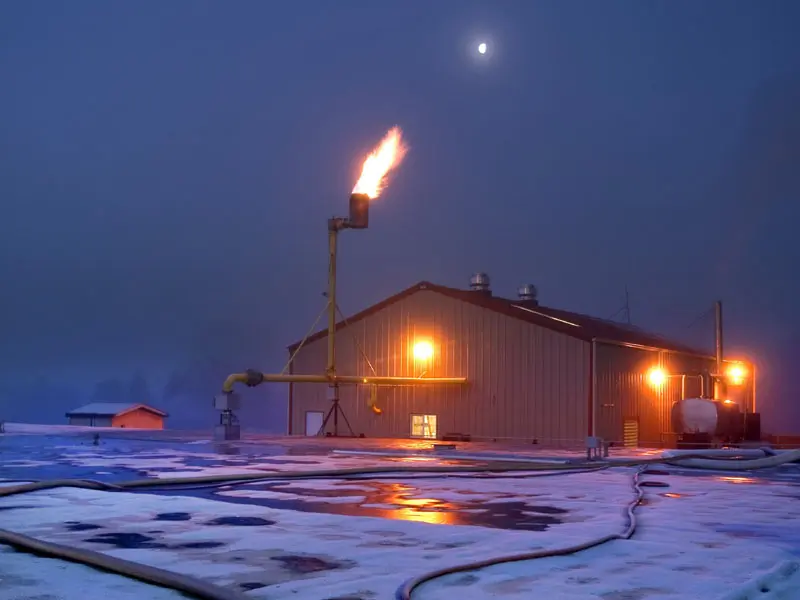
Qualco Energy, WA
Dairy + food wastes by Regenis Corp.
Additional Resources
Related Frequently Asked Questions
How do I get started?
With only a few basic pieces of information, namely:
- What is being processed (data such as TS, TSS, pH are helpful too)
- Daily volumes (max)
- Timeframe (when desired)
We can estimate both the capital and operating costs. Melissa VanOrnum, 920-418-4543, will be glad to help you investigate at no obligation.
Who can I contact for more information?
Contact Melissa VanOrnum, DVO Vice President Marketing, at 920-849-9797 or info@DVOinc.com
Is your “Guaranteed Retention Time” also one reason why DVO digesters produce more biogas using the same feedstocks, than other designs?
Yes. And also why we see better odor reduction and pathogen control.
Why do DVO digesters see a much better pathogen reduction than the “complete-mix” or “plug-flow” designs?
3rd party figures are publicly available (see above-referenced "EPA - Gordondale" report available on our website) where others typically do not. For pathogens that cause farmers problems such as E-coli and salmonella, we see a 97-99% removal. Often lab reports come back "none detected." This is only possible because our design offers a guaranteed hydraulic retention time (HRT) -- which means every unit of waste that goes into our digester is retained and processed for a guaranteed number of days. In a complete-mix digester this is impossible. Some waste leaves the system too soon (waste not fully digested will contain many more pathogens, and energy not harvested), and some is also left in and processed longer than necessary, which reduces system efficiency. And, you can't kill the same pathogen more than once.
Can I add additional energy substrates to my digester? Such as food wastes?
Absolutely. DVO's unique 2-stage "Mixed Plug-Flow™" design actually does a more thorough job of processing food wastes and other energy substrates, compared to complete-mix/CSTR and other digesters. This is partly due to our guaranteed retention time. — namely, waste does not leave the system "too soon". For this reason DVO also does a better job of pathogen and odor destruction. However, before adding any substrate for the first time we recommend a lab analysis be performed on a sample to ensure that there are no bactericides, high salt concentrations, etc. that might disrupt the digestion process.
Will the digester take in ALL my biowastes?
Yes. They are designed to accept a wide variety of organic wastes, with a range of solids content.
What does it cost to install?
The installation cost is relative to the volume of waste to be processed daily. The particular characteristics of any waste stream can also influence system design and cost as well. Some upfront testing is usually desired.
Is PR easy to operate?
Yes. Like our digester, Phosphorus Recovery is designed to operate automatically and with minimal supervision.
Do I need a DVO digester? Or will any digester do?
As digester designs differ, so can their performance. Partly because a DVO digester's unique design offers a "guaranteed retention time," waste streams are more thoroughly processed than with other AD designs. The benefit is both a higher level of Phos removal and more economical operation.
DVO is initially rolling Phosphorus Recovery out to its customers, but may also offer this process to other AD owners at a later date (TBD).
Do I need a digester for this to work?
Yes. Waste streams that are anaerobically processed first enable us to concentrate and remove phosphorus economically.
Can this process be applied to co-digested, mixed-waste streams?
Yes. For example, phosphorus recovered from urban organics can be diverted from landfills. The PR system can accommodate a high-degree of input variability.
How do I know yours is a good design when everyone else claims theirs is “the best available?”
- Don't take our word for it. The U.S. EPA keeps track of U.S. farm digester installations: https://www.epa.gov/agstar/livestock-anaerobic-digester-database Download this Excel spreadsheet, sort it by the "System Designer" column, and you will see how many DVO has sold in the previous few years (versus competing systems). You will also see repeat DVO customers – a key indicator of customer satisfaction.
- Talk directly to our customers. Any of them. Unlike others we don't provide a "referral sheet." Our customers are our best salespeople, and we encourage you to ask them about their experience with our system. For example, in the dairy industry some of the largest and most respected names (such as Fair Oaks, Bos, and Bettencourt) and operations of all sizes and configurations (scrape, flush, vac, sand etc.), employ our system.
- Compare actual performance figures. It's hard to find complete and accurate performance figures from other companies, especially for manure waste streams that do not contain any substrates (conveniently making valid apple-to-apple comparisons impossible). The EPA commissioned an extensive study at one of our sites, our first built – and the results are available here.
Why do DVO’s biosolids have the reputation of being an excellent bedding material for animals?
Our guaranteed hydraulic retention time means all waste is uniformly processed, and none leaves the vessel too soon. In a Complete-Mix/CSTR digester, some waste leaves too soon, leaving food for bacteria, odor and pathogens. Some also remains longer than desired, decreasing processing efficiency.
Why do DVO digesters see much better pathogen reduction than “complete-mix” or “plug-flow” designs?
Third-party figures are publicly available, where others typically do not. For pathogens that cause farmers problems, such as E. coli and salmonella, we see 97-99% removal. Lab reports often come back "none detected." This is only possible because our design offers a guaranteed hydraulic retention time, which means every unit of waste that goes into our digester is retained and processed for a guaranteed number of days. In a complete-mix digester this is impossible. Some waste leaves the system too soon, and waste not fully digested will contain many more pathogens, and energy not harvested. Some waste also is left in and processed longer than necessary, which reduces system efficiency.
What do I do with the liquid from the digester?
Since the digester changes the nutrients and waste from primarily organic to primarily inorganic, you can apply digested liquid directly to a growing crop without fear of burning the leaves or killing the plant. As a result, our farmers typically hold their digested liquid for use during the growing season to increase their crop yield (often, significantly). Optionally, DVO can treat the digestate, concentrate the nutrients, and recycle the digestate to dampen incoming, drier wastes. This process is necessary to economically digest poultry litter.
What happens to the nutrients in the manure/biowaste?
No nutrients are lost because the digester only breaks down carbon-based molecules. It cannot break down nitrogen, potassium or phosphorous. However, it does change the form of the nutrients, from an organic state to an inorganic state, which means nutrients are more "plant-accessible." This is why liquid coming from a digester can be applied to a growing crop without burning the leaves. In fact, the nutrients act as an excellent starter fertilizer.
As my operation expands, can my digester expand with it?
Yes. There are two ways to expand your digester. One is to lengthen the digester like you might lengthen a barn. The other option is to build a second digester next to the first and have the two share a common wall.
How much does it cost?
The cost will vary considerably depending on the size and layout of the operation. We can provide a rough estimate after gaining an understanding of certain aspects of your operation. We work hard to keep our system costs down without impacting system performance or reliability.
What are your digester’s products/revenue streams?
Biogas, which can be used to create electricity or in a boiler to create steam. Or it can be scrubbed to create natural gas. Other revenue streams include a solid, a liquid and waste heat.
- Digested solids can be used as a high-quality animal bedding, replacing other bedding sources such as sand or sawdust. Solids can also be sold as a peat-moss replacement or a fertilizer.
- The digested liquid effluent can be applied to a growing crop, reducing the likelihood of runoff and increasing crop yield.
- Other revenue streams include the possible sale of carbon credits, renewable energy credits, and the Federal Production Tax Credit.
- Waste heat in the form of hot water is a byproduct that digester owners are using to heat various parts of their operation (parlor, maintenance shop, etc.)
How large must my waste stream be to make economic sense?
A common question that receives the common response, “It depends.” The major determining factors are how much energy is available in the waste stream, and what electrical rates are available from your utility. There are other factors as well. Our digesters are scalable and accommodate a wide range of waste volumes. For example, our dairy farm customers range in size from 600 cows to over 10,000 head (and multiples for larger dairies).
Can broiler litter also be digested?
Yes. Barn top-scrape / cleanout intervals and bedding material selection can optimize digester performance.
How do I know what can be digested?
At no cost or obligation DVO will examine your waste stream(s) content or lab data and provide any recommendations.
Latest News
On-Farm Renewable Natural Gas Facility Expands with DVO Technology
Indiana site utilizes DVO Two-Stage Linear Vortex™ digesters for renewable energy production
Read MoreAdvanced Phosphorus Recovery System Introduced by DVO
By Jillian Cameron, FrazierHeiby CHILTON, Wisconsin – DVO, Inc., a leader in the environmental engineering industry and North America’s largest...
Read More
